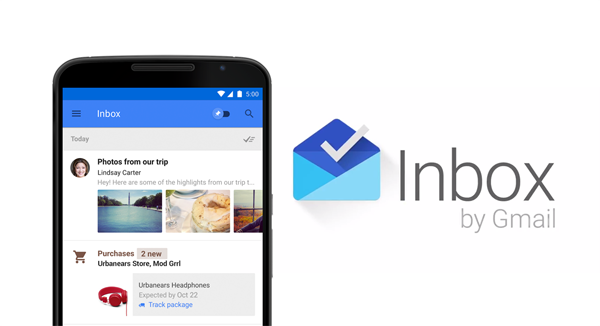Google’s Newfangled Inbox e mail App Opens To every person, Unveils New features
The Google e mail client that is not Gmail simply obtained a little less experimental.
could 28, 2015
final October, Google announced the most important electronic message-related information it’s had in years—and a part of what made it so large was once that it did not involve any new Gmail features. instead, it was once an all-new approach to get entry to Gmail called Inbox.
you can get entry to Inbox from any web browser, but its streamlined interface used to be designed with apps for iOS and Android telephones and drugs in mind. It took bolder steps than Gmail that can assist you whack clutter, such as clustering more than a few different types of mass mailings collectively and letting you delete them in bulk. And like Android Lollipop and other up-to-date Google offerings, it sported the company’s new subject matter Design feel and appear.
Scratching an itch comparable to that of Dropbox’s Mailbox app, Inbox is mainly what Gmail would possibly have been if it had been launched in 2014 instead of 2004. but by using making it an all-new app, Google evaded disorienting or nerve-racking somebody who used to be pleased with Gmail the way in which it was once. It also launched Inbox in non-public take a look at kind, which supposed that even individuals who found it alluring had to rustle up an invite to try it.
After months of checking out, Google is at ease sufficient with how Inbox has shaped up to end the invitation-best mode. At its Google I/O convention, it’s saying that Inbox will likely be available to somebody who needs to make use of it. (unlike many a newish Google product—and even some oldish ones—it won’t be labeled as a beta.)
along with opening up Inbox’s floodgates, Google is including just a few new features:
shuttle bundles. When Inbox spots trip-related emails akin to flight and hotel confirmations, it assembles a smart itinerary for you—along the strains of TripIt, but caught on the high of your inbox where you could’t pass over it. It also pulls in relevant information from the online, akin to live updates on flight status, and updates the whole lot on the fly.
Undo send. For years, a Gmail Labs function has allow you to withdraw a message proper after you send it, if you wish to edit it or had second ideas about sending it at all. Now you can pull again an outgoing Inbox message up to 10 seconds after urgent ship—the primary time that Beaverbrook-saving choice has been available in a Google cell e mail app.
To-do scanning. Inbox will scan your messages searching for textual content that appears like a role—corresponding to anyone asking you to name a health care provider—and can bubble it as much as guarantee it gets your consideration.
Deep linking. Open a HotelTonight reservation or Eat24 order in an e mail, and instead of launching it in a browser, Inbox will open the right app. it is finished the usage of an open standard that any developer can beef up for its personal apps.
Google Apps support. individuals who use Gmail’s business-oriented incarnation will have the ability to use Inbox to get admission to their mail.
just a few other issues. you can configure Inbox to delete messages rather than archive them when you swipe, and reminders are now integrated with Google’s Evernote-like preserve app.
in the meantime, back at Gmail, the big I/O news is not a brand new feature, but a host: 900 million. that’s how many active users the carrier has, and it’s more than double the determine that Google quoted the last time it talked hard numbers back in 2012. the corporate says that three-quarters of these 900 million other folks use Gmail on mobile gadgets at least part of the time.
unlike Microsoft, which migrated lots of of thousands and thousands of Hotmail customers to the more up to date Outlook.com in 2013, Google has no plans to phase out Gmail or in any other case push someone into Inbox towards their will. It also hasn’t completed anything yet to monetize Inbox, one thing that Gmail has always executed—now not without controversy—by displaying advertisements tied to key phrases in message textual content.
Alex Gawley, Google’s product director for Gmail and Inbox, advised me that the two products and services will coexist indefinitely, with Gmail skewing in opposition to the normal and Inbox persevering with to rethink e mail for the cell generation. “folks have workflows ingrained in how they use e mail,” he says. “it’s truly laborious to vary that. people will trade when it’s proper for them—when their current workflow fails. We wish to be there in that moment, and are hopeful we are able to help them.”

(102)














